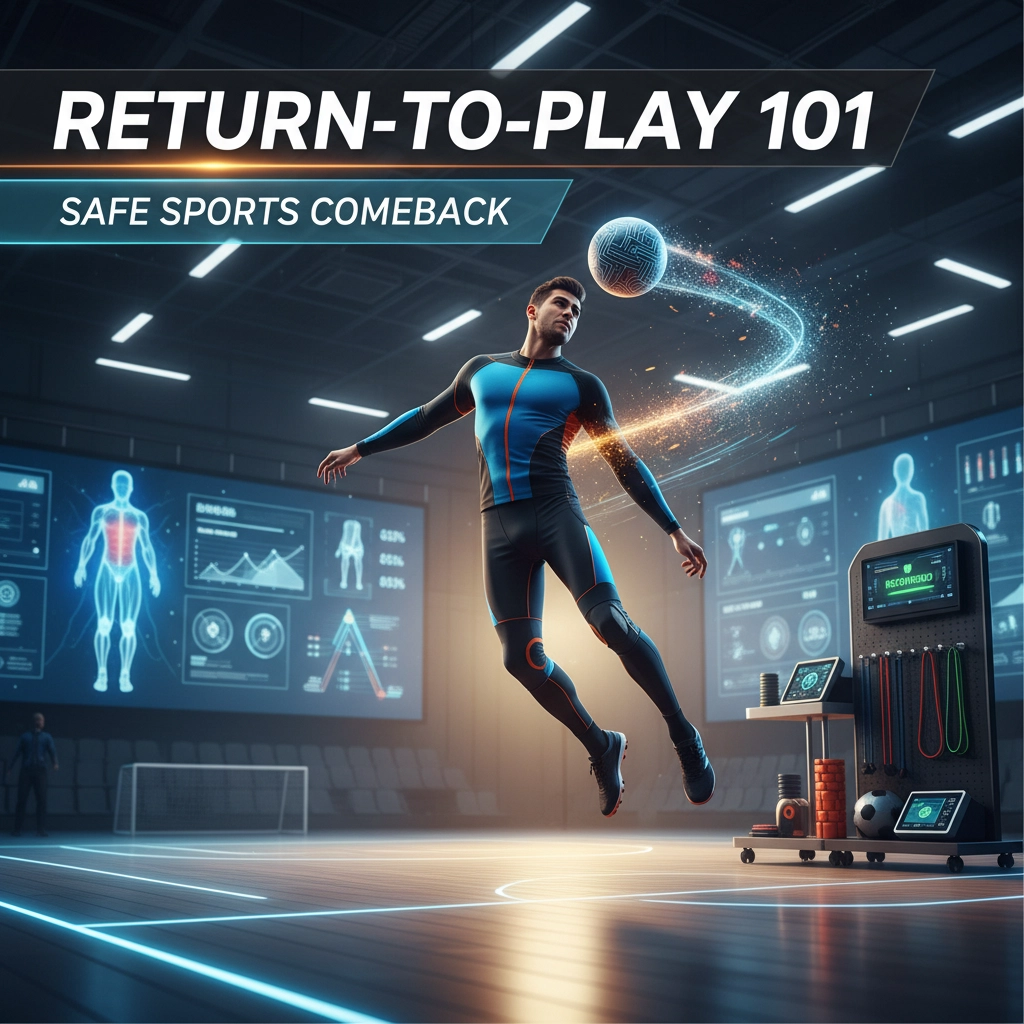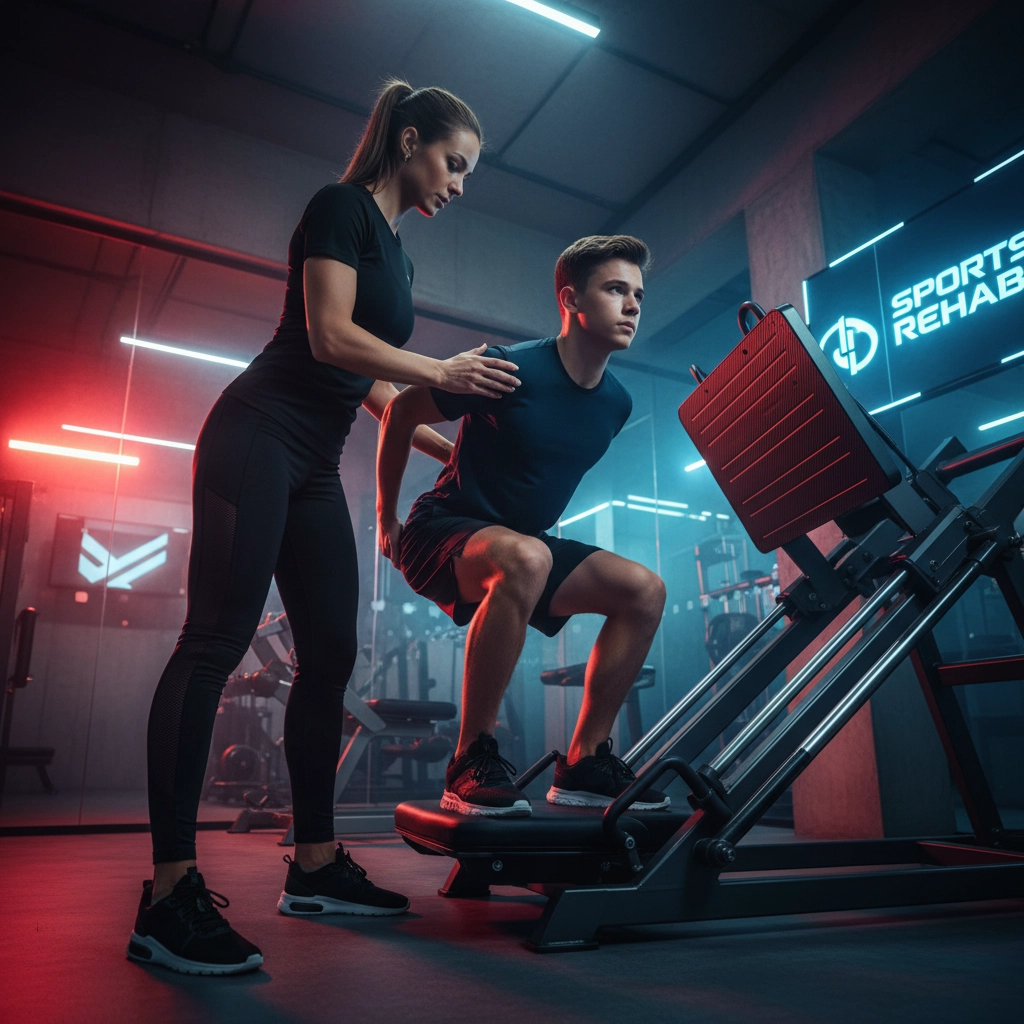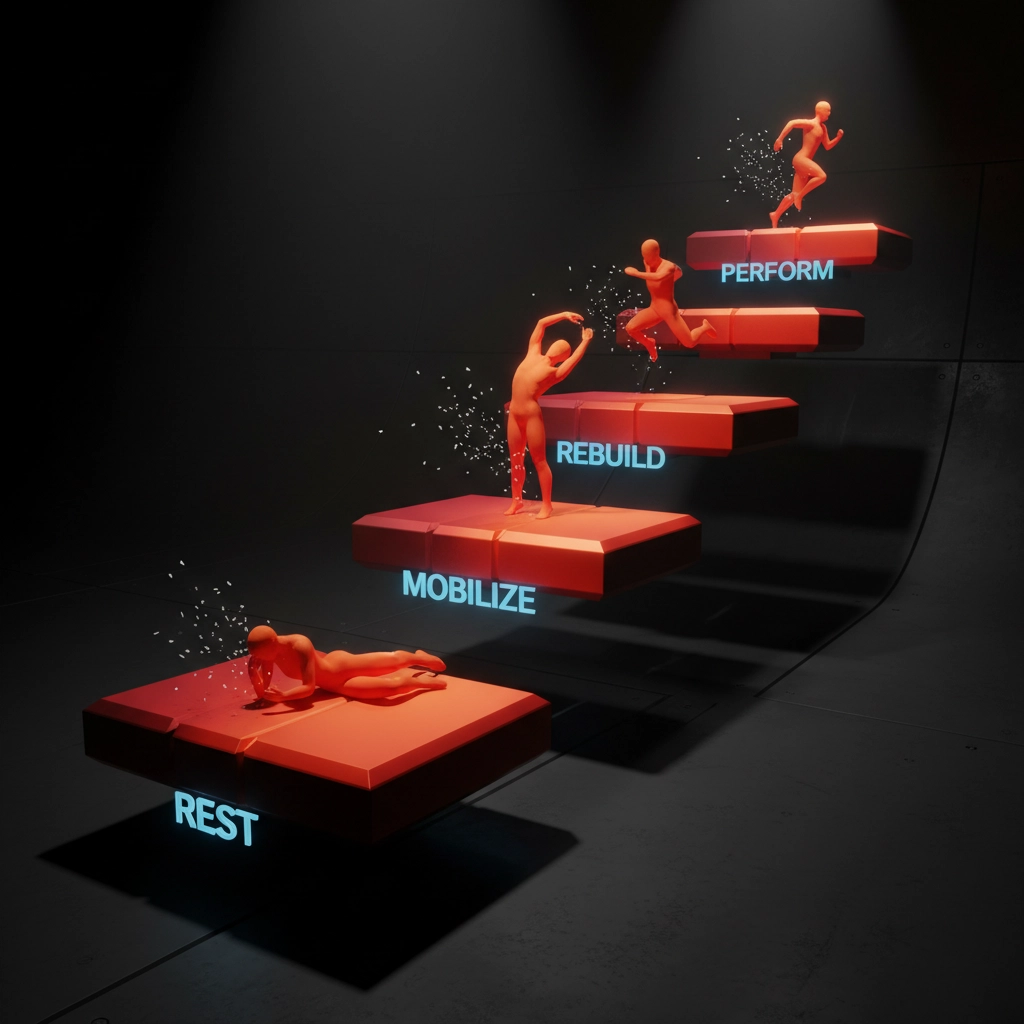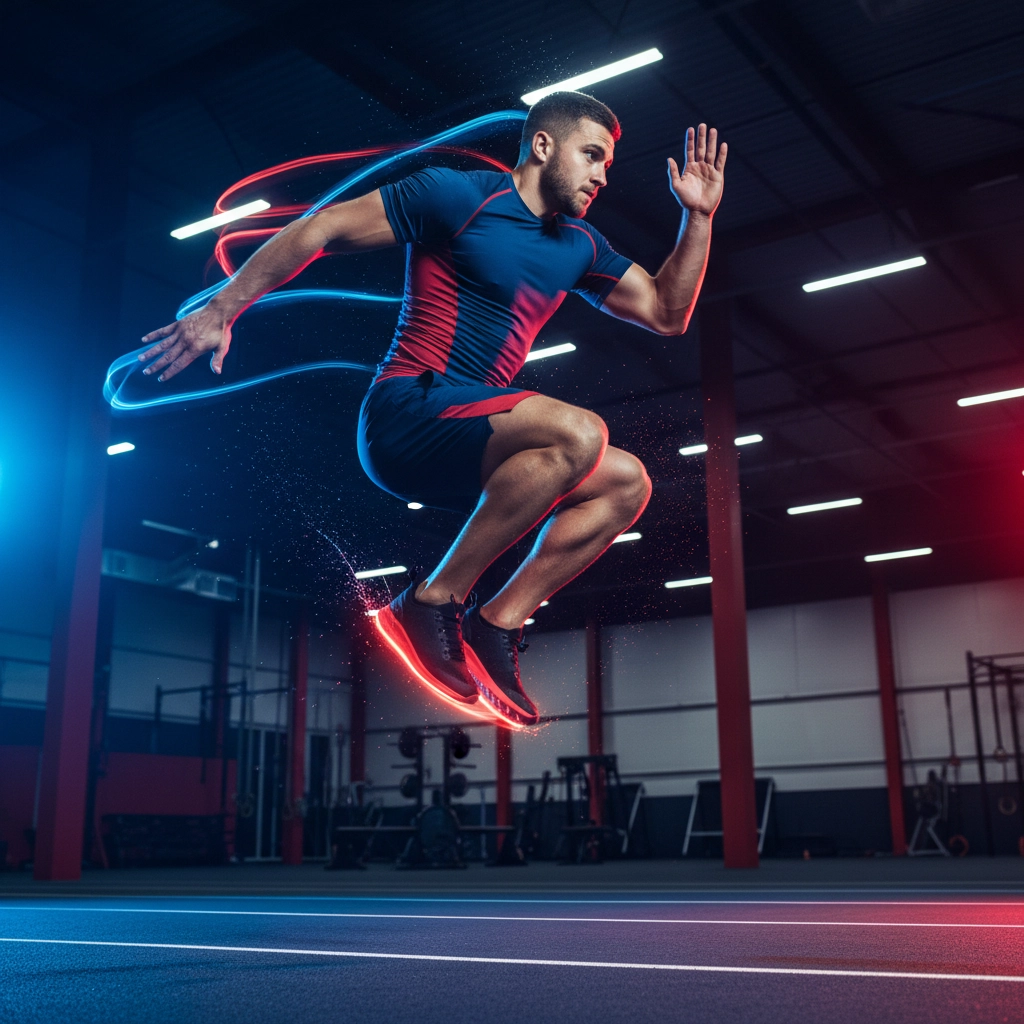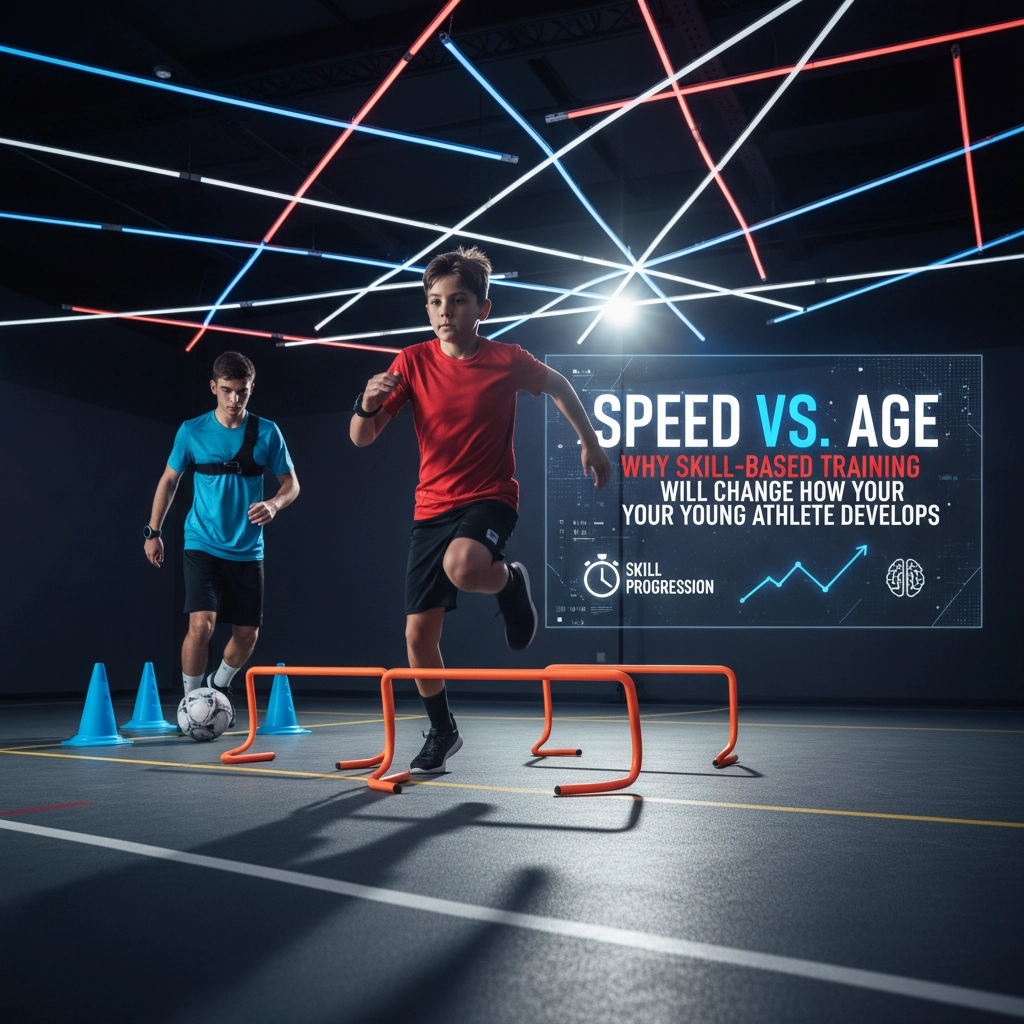Getting back to sports after an injury can feel overwhelming: especially if it's your first time navigating the return-to-play process. Whether you're a parent watching your child recover from a sprained ankle or an athlete yourself coming back from a more serious injury, understanding what lies ahead makes all the difference.
At Athletic Republic Knoxville, we see athletes at every stage of this journey. The good news? With the right approach and patience, most athletes not only return to their sport but often come back stronger and smarter than before.
What Exactly Is "Return-to-Play"?
Think of return-to-play as a carefully planned roadmap back to your sport, not just a doctor's note saying "you're cleared." It's the point where you can participate in your sport at a level similar to before your injury: but getting there involves much more than just waiting for pain to go away.
The process ensures you're truly ready: physically, mentally, and skill-wise: to handle everything your sport demands. Rushing back too soon doesn't just risk re-injury; it often means a longer recovery time overall.
The Three Levels of "Return"
Here's something most people don't realize: there are actually three different stages of returning to sports, and they're not all the same thing.
Return to Participation is where you're doing some light activity or rehab exercises, but you're definitely not at full speed yet. Think of this as dipping your toe back in the water.
Return to Sport means you're back playing, but not quite at your pre-injury performance level. You might be a little cautious, maybe not pushing as hard in practice, or still building back your confidence.
Return to Performance is the ultimate goal: you're not just back, you're performing at or even better than your pre-injury level. This is where all that careful progression pays off.
The Four Phases Every Athlete Goes Through
Understanding these phases helps set realistic expectations for your timeline:
Phase 1: Control the Damage
Right after injury, the focus is managing swelling and inflammation. This might involve rest, ice, compression, or in some cases, surgery. It's not glamorous, but this foundation phase is crucial for everything that follows.
Phase 2: Rebuild the Basics
Once initial healing begins, you'll work on regaining full range of motion and basic strength. This is where physical therapy typically starts, focusing on getting your injured area moving normally again.
Phase 3: Progressive Loading
Here's where things get more sport-specific. You'll gradually increase activity intensity, often using protective gear like braces or tape. Your body is learning to trust the injured area again under increasing demands.
Phase 4: Sport-Specific Preparation
The final phase involves high-level functional training that mimics your sport's specific movements and intensities. By the end of this phase, your re-injury risk should be minimal.
What Makes Athletic Republic Knoxville Different
Our approach to return-to-play goes beyond just checking boxes. We use data-driven assessments to understand exactly where you are in your recovery and create personalized training programs that address your specific sport's demands.
We don't just ask "does it hurt?": we measure your power output, movement patterns, and reaction times to ensure you're truly ready. Our trainers work closely with your medical team to make sure every step forward is a safe one.
The Biggest Mistakes We See (And How to Avoid Them)
Mistake #1: Playing Through Pain
Pain is your body's alarm system. If something hurts during activity, that's valuable information, not something to ignore. Trust your body and communicate openly with your medical team.
Mistake #2: Skipping Steps
Every phase exists for a reason. We've seen athletes try to jump from basic range-of-motion exercises straight to full practice: it rarely ends well. Each phase builds the foundation for the next.
Mistake #3: Focusing Only on the Injury Site
Your ankle might be the part that was injured, but if you've been walking differently for weeks, your hip and back have been compensating. A good return-to-play program addresses the whole body.
Mistake #4: Ignoring the Mental Game
Being injured is stressful and can shake your confidence. That hesitation or fear you feel? It's normal and needs to be addressed just like the physical aspects of recovery.
Common Injuries That Need Extra Attention
While every injury is different, some require particularly careful return-to-play protocols:
- Concussions: These need specialized testing and gradual progression protocols
- ACL injuries: Often require 6-9 months of careful progression
- Ankle sprains: Frequently re-injured if not properly rehabilitated
- Stress fractures: Need time for bone healing plus strength rebuilding
- Shoulder injuries: Require specific attention to movement patterns
Red Flags That Mean You're Not Ready
Watch out for these warning signs that suggest you need more time:
- Favoring the injured area or limping
- Decreased performance in basic movements
- Swelling that returns after activity
- Fear or hesitation during sport-specific movements
- Unable to perform sport skills at normal intensity
How to Set Yourself Up for Success
Be Patient with the Process
Everyone heals differently. Comparing your timeline to another athlete's can be discouraging and lead to poor decisions. Focus on your own steady progress.
Communicate Openly
Keep your medical team, trainers, and coaches informed about how you're feeling. Honest communication helps everyone make better decisions about your progression.
Trust the Experts
Your sports medicine team and performance trainers have seen this before. When they recommend another week of a certain phase, there's a good reason.
Focus on What You Can Control
Use your time away from full competition to work on other aspects of your game: mental skills, studying film, or working on non-injured areas of your body.
The Athletic Republic Knoxville Advantage
When you're ready to take your return-to-play to the next level, our team at Athletic Republic Knoxville brings together cutting-edge technology and proven protocols to ensure you come back stronger than ever.
Our comprehensive approach includes movement assessments, sport-specific training progressions, and ongoing monitoring to reduce re-injury risk. We work with athletes from middle school through college and beyond, understanding that each sport and each athlete has unique demands.
Your Comeback Story Starts Here
Remember, a successful return-to-play isn't just about getting back to where you were: it's about coming back better. The discipline, patience, and dedication you develop during this process often makes you a stronger, more resilient athlete.
Every injury is an opportunity to learn something new about your body, address weaknesses you might not have known existed, and develop mental toughness that serves you well beyond sports.
At Athletic Republic Knoxville, we're here to support you through every phase of this journey. Your comeback story is waiting to be written: let's make sure it's a great one.
Ready to start your return-to-play journey the right way? Contact our team to learn more about our comprehensive approach to safe, successful sports comebacks.
